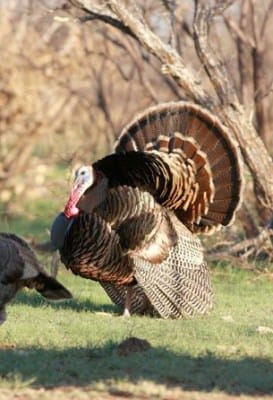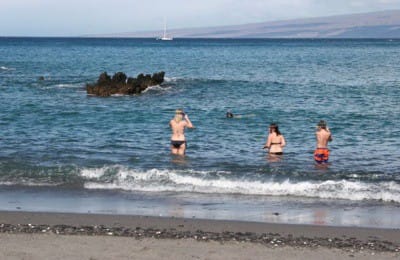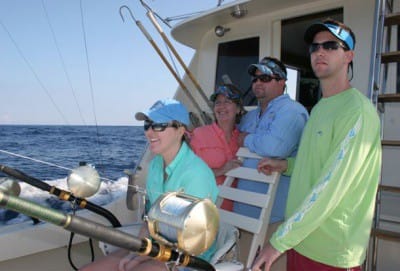
There’s a folksy Hawaiian islands truism that says people who come to this remarkable paradise “discover the Big Island on their third visit.”
What that means is first-timers to Hawaii usually head to the hustle and bustle, beaches and tourist spots of Honolulu (on the island of Oahu), with perhaps their next trip targeting Maui and its swank hotels, restaurants, shows and nightlife.
On their third trip to the “islands,” visitors often want a little more of the “real” Hawaii. That’s when they learn about and make a visit to “The Big Island.” In resident terms, that’s oversize Hawaii Island – which is larger than all the other Hawaiian Islands combined, and is the largest island in the United States (as well as the most southern U.S. location).
The Big Island (with a population of about 200,000) boasts plenty of beautiful beaches, grand and sprawling resorts, world-class golf resorts, and all things tourists desire from other better-known Hawaiian spots. But what the island of Hawaii offers in amazing ways is BIG outdoors, and it is nothing short of spectacular – readily available to all visitors, and in startling variety that astounds even well-seasoned outdoorsmen.
In a recent whirlwind 9-day outdoor jaunt around the big island, my adult family fished for marlin and dolphin; swam with porpoises and big green sea turtles; snorkeled with countless rainbow-hued fish; zip-lined through a jungle paradise that included rappelling down huge tropical trees, and crossing cable bridges in forest canopy far above meandering streams and lush rain forest understory.

We ogled whales and sleeping beached sea turtles; and climbed part of the tallest mountain on earth (for true, read on).
We watched an awe-inspiring starry sky from one of the best viewing spots on earth, where one of the biggest and most sophisticated observatories is located that draws scientists from around the world.
In a mere three-hour drive one day, we stepped out of the Pacific Ocean on a black sand beach where wind surfers soared; then drove to the top of cloud-shrouded mount Mauna Kea and had a snowball fight where icy drifts attracted happy snow boarders.
We learned that there are no “private” beaches at even the most exclusive of gated and seemingly private “Big Island” developments. Owners of $20 million dollar estates must share island beaches with whoever asks for access, provided they park in designated areas, and only roam the community beach. Thus there are countless black-sand volcanic beaches throughout the giant island where surfing, swimming, snorkeling and SCUBA diving are available to all.
We kayaked and paddle boarded, surfed and swam, hiked and biked, never visiting the same place twice.
Wild turkeys are such a common sight on the Big Island that golfers and resort visitors rarely notice their strutting and gobbling. Big Rio Grande toms waddle across home patios and streets, roost in roadside trees, and relish the fact there are no predators on the island to thwart their dominance.
Pheasants of several varieties, as well as at least four types of doves, quail, partridges and ducks are so bountiful in the countryside, that a shotgunner would consider it heaven.
Wild hogs abound, and native Hawaiians are proud pig hunters with a long and rich luau tradition. I spoke to several hunters who wore giant boar tusk trophies around their necks, and gladly spoke of long and tough hunts through mountainside jungles, as they followed specially-trained dogs that tracked and trailed their quarry.
While Hawaii Island has plenty of hustle and bustle in the town of Kona (the famed spot for “grander” size marlin, and where gas stations even have mounted fish of such size), the island is amazingly rural. There are abundant farms and ranches growing everything from coffee to cattle, citrus to sugar cane. While driving island highways you quickly can travel from lush jungle beside the Pacific, to mesquite flats looking like Texas, to volcano-rock strewn “lava fields” appearing like the moon.
Hawaii has active and erupting volcanoes where tourists thrill at molten rock pouring down mountains and into the ocean. Hawaii Volcanoes National Park covers much of the active mountains on the Big Island.
The Big Island offers sailing and paddling tours, adventure walks to waterfalls and quiet jungle picnic spots. There’s horseback riding, and rental ATVs to ride rural island trails with guides who know the best and safest routes.
SCUBA diving and snorkeling are a big draw to the island, as rocky cliffs, reefs and VERY deep water is nearby everywhere along the coast. There are plenty of commercial boats offering everything from simple day snorkel jaunts to reefs with myriad colorful fish, to night SCUBA trips for observing giant manta rays.
The fast drop-offs to reefs and rocky volcanic ledges is much of what makes Hawaii such a famed spot for massive marlin (blues and blacks), with 1,000-pound fish caught annually. At times in summer, anglers catch multiple marlin in a day of trolling, usually out of Kona. I spoke to anglers who caught five or six fish to 300-pounds in a single day. Yellowfin tuna, dolphin (mahi-mahi) and wahoo also abound. Even bonefish are caught from some regions of the island. A youngster landed a 7-pounder during my visit.

Anglers are trolling in thousands of feet of vodka-clear water less than a mile offshore. Not surprising, considering the island is simply a cluster of volcanic mountains that have topped out above the Pacific. This is why Mauna Kea is the world’s tallest mountain (13,796 feet above sea level, 33,500 feet top to bottom). If measured from the ocean floor to the top, it dwarfs Everest.
A little fun local lore is always a good thing to learn during a trip. And on the Big Island, we left doing the “shaka brah.” It’s a friendly greeting wave with thumb and pinkie finger extended, middle three fingers curled. It looks much like the “hook ‘em horns” sign given by University of Texas fans.
“Shaka brah” is steeped in local lore tradition, however, as legend says an old and happy native islander lost the three middle fingers of his waving hand in an accident. Yet, with fingers gone, he still waved to one and all, and thus “shaka brah” was born. It quickly spread around the Hawaiian Islands, beach set, and fast became a friendly wave among surfers, paddlers and fishermen. Now everyone on the islands waves the “shaka brah” sign, and it’s a nice way to keep fond island memories alive.
So if you get the chance, make the Big Island the “first” place to visit in Hawaii, not the third.
And learn to “Shaka brah.”
While great facilities abound on the Big Island, for a destination resort, the Hilton Waikoloa Village Resortwww.hiltonwaikoloavillage.com has no peer, with abundant outdoor activities available right outside your door, including snorkeling, kayaking, paddle boarding, surfing, sailing, and much more nearby.
For Kona big game fishing, check with Capt. Lance Gelman www.longrangersportfishing.com. For adventurous zip-liners and rappelers, see Rod Pacheco www.hawaii-forest.com.
The Union Sportsmen’s Alliance website is designed to provide valuable articles about hunting, fishing and conservation for members of AFL-CIO affiliated labor unions and all sportsmen and sportswomen who appreciate hunting and fishing and want to preserve our outdoor heritage for future generations. If you would like your own story and experience from the outdoors to be considered for our website, please email us atUSAmembers@unionsportsmen.org.



